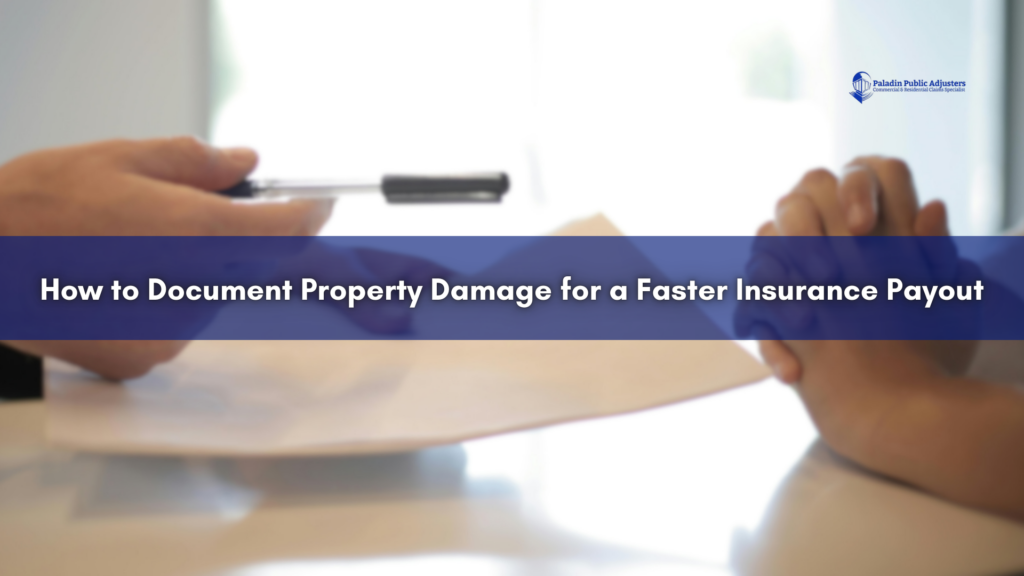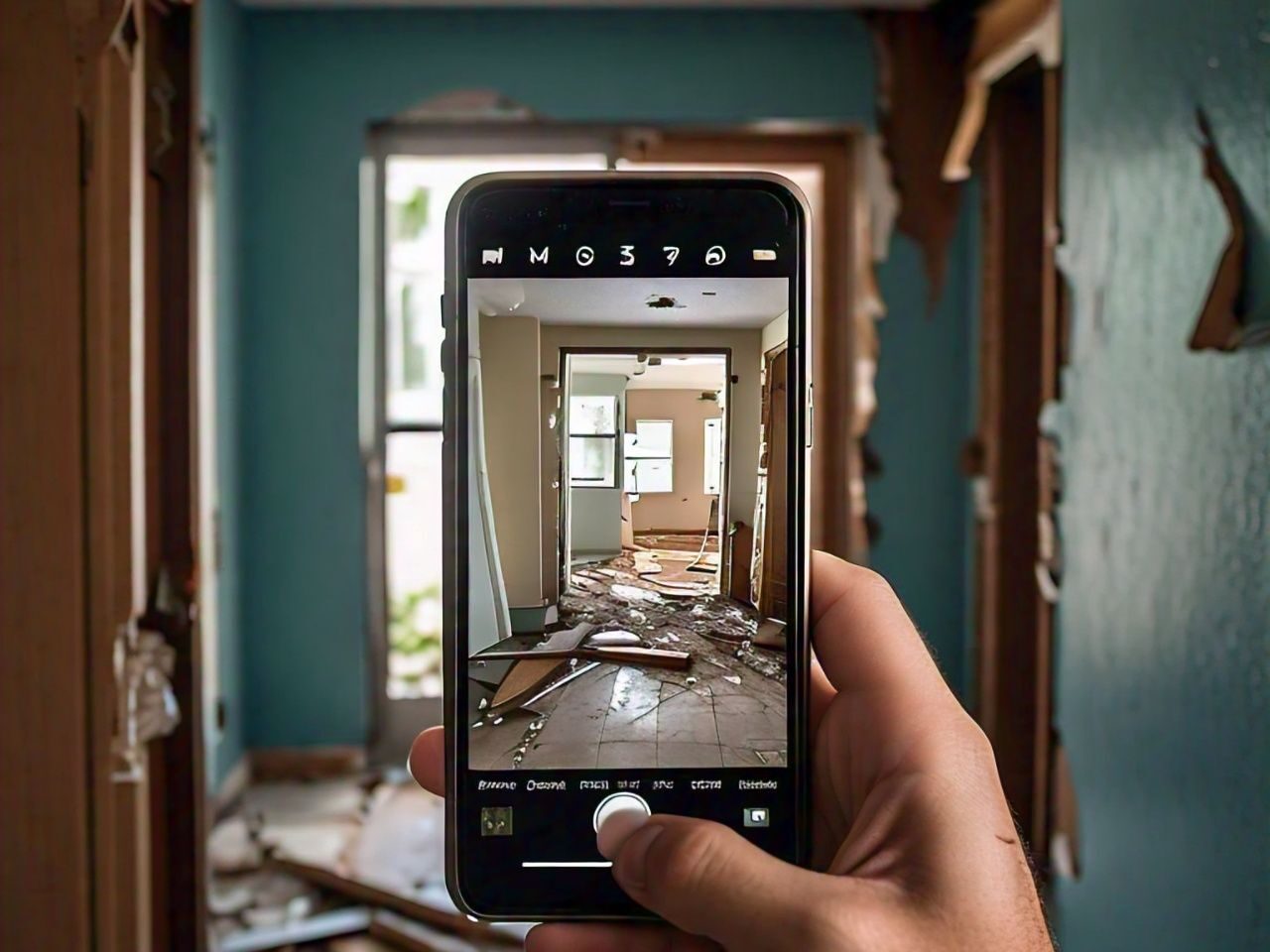
Documenting Property Damage for a Faster Payout
When disaster strikes, whether it’s a fire, flood, or storm, the aftermath often involves more than just physical damage. The process of filing an insurance claim is another terrifying task that can make or break your recovery. One of the most critical elements of the claims process is documentation. Without proper records of the damage, you may find yourself facing an underpaid claim or a prolonged claims process that delays your payout. In this article, we’ll explore how to properly document property damage to ensure you receive a faster, more accurate payout for your losses.

The Importance of Proper Property Damage Documentation
Filing a property insurance claim involves more than just filling out a few forms and submitting them to the insurer. One of the most crucial aspects of your claim is the documentation of the damages. The more thorough and accurate your documentation, the better your chances of securing a fair settlement.
Insurers will rely on the evidence you provide to assess the damage and determine the value of your claim. If your documentation is incomplete or lacks the necessary details, it can result in delays, a reduced payout, or even a denial of your claim. Therefore, knowing how to properly record the damage is essential for ensuring that you get what you deserve.
Steps for Documenting Property Damage
- Take Detailed Photos and Videos The first step in documenting any property damage is to take clear, detailed photos and videos of everything. Don’t just focus on the obvious damage, look for hidden damage as well, such as water stains, structural issues, and electrical damage that might not be immediately apparent. These images and videos will serve as the primary evidence to back up your claim and provide a visual record of the destruction.
- Take multiple photos from different angles to capture the extent of the damage.
- If possible, use a ruler or measuring tape in the photos to show the size of the damage.
- Record video footage if possible, as it can provide a better understanding of the damage’s context.
- Create an Itemized List of Damaged Property An itemized list of all damaged property is essential. This list should include a description of the item, its age, its condition before the damage, and the cost of replacement or repair. For high-value items, such as electronics, furniture, or appliances, provide receipts, warranty information, or any proof of purchase.
This list not only serves as evidence of what was lost but also helps insurers determine the fair value of each item. It’s important to be as detailed as possible in this list and include any items that were partially damaged but still need to be replaced or repaired. - Document Structural Damage In addition to personal property, make sure to document any damage to the structure of your property. This includes damage to the roof, walls, floors, windows, doors, and foundation. Take photographs of cracks, holes, and areas that might have been compromised structurally. Document any signs of smoke, soot, or water damage as well, as these often require separate evaluations from the insurance company.
- Keep Records of Temporary Repairs If you have made temporary repairs to prevent further damage or protect the property from weather conditions, be sure to keep detailed records of these actions. Take photos of the temporary repairs and keep receipts for any materials purchased for the job. These repairs may not be reimbursed by your insurer, but they will demonstrate that you’ve made efforts to minimize further damage, which could reflect positively on your claim.
- Get Estimates and Professional Opinions For significant damage, especially to structural elements or high-value property, it’s often beneficial to get professional estimates for repair or replacement. Having an expert’s opinion not only strengthens your case but also gives you a clearer understanding of the full scope of the damage. An independent contractor or restoration company’s estimate can provide an objective view that supports the value of your claim.
How a Public Claims Adjuster Can Help

Navigating the claims process can be overwhelming, particularly when dealing with extensive property damage. This is where a public claims adjuster can be a valuable resource. Unlike insurance adjusters, who work on behalf of the insurance company, a public adjuster represents your interests and ensures that you receive a fair payout.
A public adjuster can assist with:
- Assessing the Full Extent of Damage: Public adjusters are trained to identify damages that may not be immediately visible to the untrained eye, ensuring no part of your claim is overlooked.
- Providing Expert Documentation Support: They will help you document damage in a way that meets the insurer’s requirements and strengthens your case.
- Negotiating the Claim: A public adjuster can negotiate on your behalf, ensuring that the insurer doesn’t undervalue your claim or try to cut corners.
Avoiding Common Documentation Mistakes
- Failing to Record the Entire Loss: One of the most common mistakes homeowners make is only documenting the most obvious damage. Ensure that you document all losses, both big and small, to avoid leaving anything out.
- Not Providing Enough Detail: Vague descriptions or missing receipts can cause your claim to be undervalued or even denied. Always provide as much detail as possible to ensure your insurer understands the extent of the loss.
- Not Keeping Copies of Your Documentation: Make sure you keep copies of all documentation you submit, including photos, videos, receipts, and estimates. This will protect you in case the insurer loses any of your records or disputes your claim.
Moving Forward with Your Claim
Once you’ve documented the damage thoroughly and gathered all necessary evidence, submit your claim as soon as possible. The faster you submit, the quicker the process will be. However, remember that delays can happen, especially if your documentation is incomplete or the damage assessment is complicated.
In the event of complications or disputes with the insurer, consider consulting a public claims adjuster. They can offer valuable support in ensuring that your claim is processed quickly and fairly.

